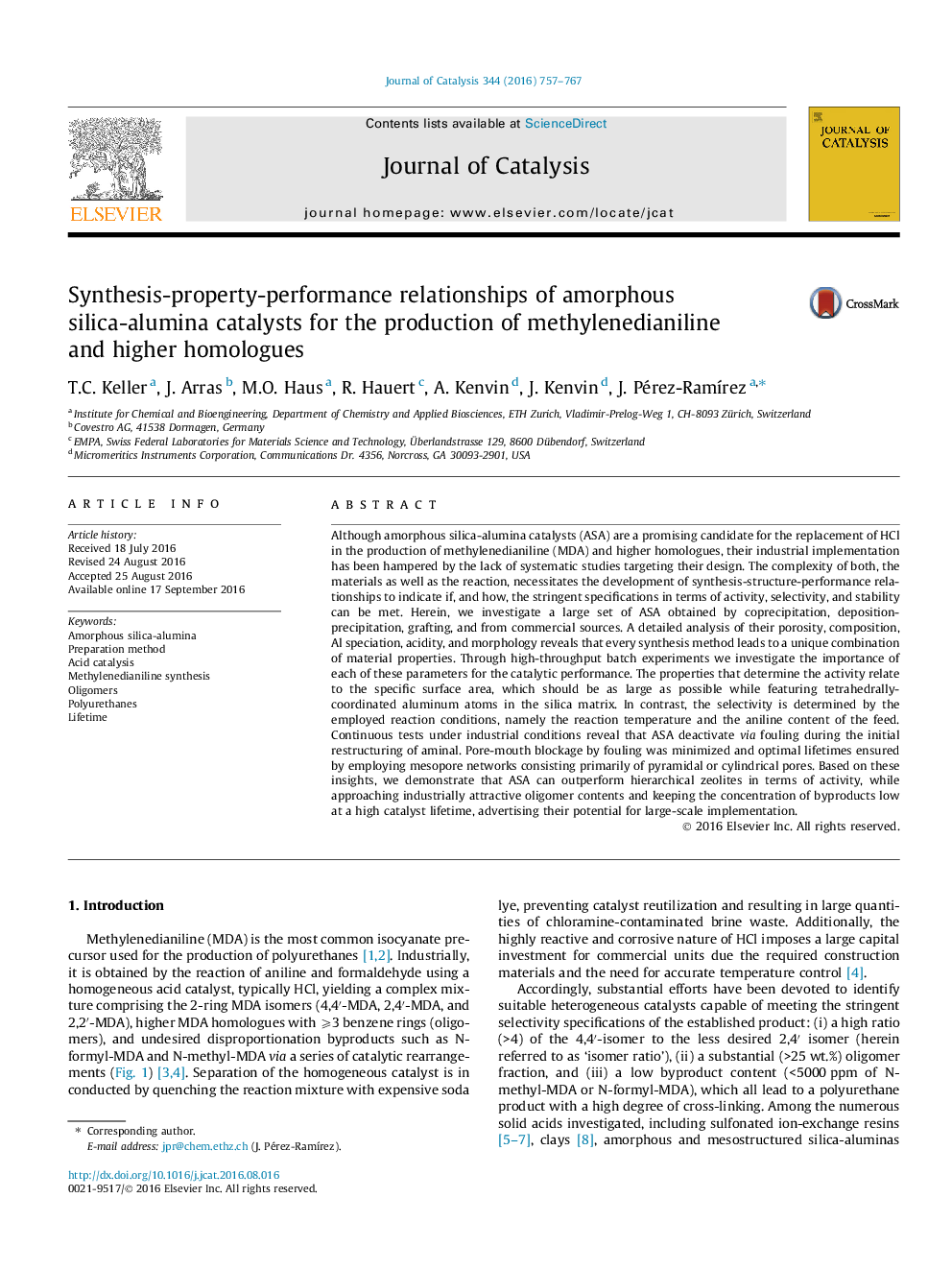| Article ID | Journal | Published Year | Pages | File Type |
|---|---|---|---|---|
| 6455922 | Journal of Catalysis | 2016 | 11 Pages |
â¢Amorphous silica-aluminas with different properties prepared by several methods.â¢Evaluation in the acid-catalyzed synthesis of methylenedianiline mixtures.â¢Performance relies on accessible mesoporosity and optimal Al content and speciation.â¢Tailored ASAs are more active and stable than benchmark zeolite catalysts.â¢Continuous operation underlines the industrial potential of ASAs for MDA synthesis.
Although amorphous silica-alumina catalysts (ASA) are a promising candidate for the replacement of HCl in the production of methylenedianiline (MDA) and higher homologues, their industrial implementation has been hampered by the lack of systematic studies targeting their design. The complexity of both, the materials as well as the reaction, necessitates the development of synthesis-structure-performance relationships to indicate if, and how, the stringent specifications in terms of activity, selectivity, and stability can be met. Herein, we investigate a large set of ASA obtained by coprecipitation, deposition-precipitation, grafting, and from commercial sources. A detailed analysis of their porosity, composition, Al speciation, acidity, and morphology reveals that every synthesis method leads to a unique combination of material properties. Through high-throughput batch experiments we investigate the importance of each of these parameters for the catalytic performance. The properties that determine the activity relate to the specific surface area, which should be as large as possible while featuring tetrahedrally-coordinated aluminum atoms in the silica matrix. In contrast, the selectivity is determined by the employed reaction conditions, namely the reaction temperature and the aniline content of the feed. Continuous tests under industrial conditions reveal that ASA deactivate via fouling during the initial restructuring of aminal. Pore-mouth blockage by fouling was minimized and optimal lifetimes ensured by employing mesopore networks consisting primarily of pyramidal or cylindrical pores. Based on these insights, we demonstrate that ASA can outperform hierarchical zeolites in terms of activity, while approaching industrially attractive oligomer contents and keeping the concentration of byproducts low at a high catalyst lifetime, advertising their potential for large-scale implementation.
Graphical abstractDownload high-res image (124KB)Download full-size image
